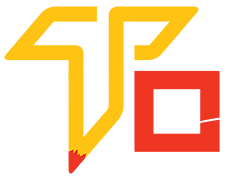Who this flutter course?
“Flutter app course designed for beginners to advanced developers, offering comprehensive instruction on building dynamic and responsive cross-platform mobile applications.”
What you will learn in Flutter course ?
In a Flutter course, you’ll learn:
- Fundamentals: Understand Flutter’s architecture, widgets, and UI components.
- Dart Programming: Master Dart language concepts for building Flutter apps.
- UI Design: Create visually appealing and responsive user interfaces.
- State Management: Implement efficient ways to manage app state and data.
- Navigation: Develop seamless navigation between screens and app flows.
- API Integration: Connect to APIs for data retrieval and updates.
- Platform Adaptation: Build apps for iOS and Android with a single codebase.
- Animations: Add fluid animations and motion to enhance user experience.
- Testing: Learn to write and execute tests to ensure app stability.
- Deployment: Publish your app to app stores and manage updates.
- Performance Optimization: Optimize app performance for speed and efficiency.
- Third-Party Packages: Utilize pre-built packages to add functionality.
- Design Patterns: Implement best practices and design patterns for clean code.
- Troubleshooting: Debug and resolve common issues in Flutter development.
- Advanced Topics: Dive into advanced topics like custom widgets and more.
Why should I learn Flutter course?
Learning Flutter offers several compelling reasons:
- Cross-Platform Development: Flutter allows you to write code once and deploy it on both iOS and Android platforms, saving time and effort.
- Single Codebase: Maintain a single codebase for multiple platforms, reducing development and maintenance costs.
- Fast Development: Flutter’s hot reload feature enables real-time updates, making the development process faster and more efficient.
- Rich UI: Flutter provides a wide range of customizable widgets for creating visually appealing and consistent user interfaces.
- Native Performance: Flutter’s high-performance engine and compiled code deliver near-native performance for smooth user experiences.
- Expressive Design: Create intricate UI animations and interactions using Flutter’s rich animation and motion APIs.
- Open Source: Flutter is open-source, with a strong community and active development, ensuring continuous updates and improvements.
- Dart Language: Learning Dart, the language used for Flutter, can be beneficial for web development too.
- Growing Demand: As Flutter gains popularity, the demand for skilled Flutter developers is on the rise, providing strong career opportunities.
- Freelancing: Flutter skills can enable you to take on freelance projects or build your own apps independently.
- Startups: Rapid development and cost-effective cross-platform support make Flutter an ideal choice for startup ventures.
- Well-Known Apps: Many popular apps, such as Google Ads, Alibaba, and Reflectly, have been built with Flutter, showcasing its capabilities.
- Learning Curve: Flutter’s straightforward architecture and comprehensive documentation make it accessible to both beginners and experienced developers.
- Innovation: Flutter’s continuous improvement and introduction of new features allow you to stay at the forefront of mobile app development.
- Personal Growth: Learning a new technology expands your skillset and keeps you adaptable in the ever-evolving tech landscape.
SALARY & PACKAGES
Junior Flutter Developer: ₹300,000 to to ₹600,000 INR
Mid-Level Flutter Developer: ₹600,000 to ₹1,200,000 INR
Senior Flutter Developer: ₹1,200,000 to ₹2,000,000 INR
Flutter Lead/Architect: ₹2,000,000 INR
JOBS & PROFILES
There are many job profiles are avaliable in varanasi & all over India. Such Job Profiles name is – Flutter Developer, Mobile App Developer, iOS/Android Developer, UI/UX Designer, Front-End Developer, Back-End Developer, Full Stack Developer, Software Engineer, Mobile App Architect, Freelance/Contract Developer, etc.

Charges & duration of SEO ( search engine optimization )
Duration : 3 month
Charges : 3,000/-
Flutter course syllabus details
- What is Flutter and its advantages?
- Setting up the development environment (installing Flutter and Dart).
- Creating your first Flutter app.
- Understanding the basic Flutter project structure.
- Introduction to Dart programming language.
- Introduction to widgets and elements
- Exploring basic widgets (Text, Image, Container, etc.)
- Layout widgets (Row, Column, Stack, etc.)
- Input widgets (TextField, Button, Checkbox, etc.)
- Stateful vs. Stateless widgets
- Handling user input and gestures
- Navigating between screens using routes
- Named routes and route parameters
- Navigation drawer and tabs
- Bottom navigation bar
- Deep linking and handling URLs
- Introduction to state management
- setState and reactive programming
- Provider package for state management
- BLoC (Business Logic Component) pattern
- Redux architecture with Flutter
- Making HTTP requests using
'http'package - Parsing JSON data
- Handling RESTful APIs
- Error handling and exception management
- Implementing authentication and authorization
- Introduction to local data storage options
- SQLite database integration
- CRUD (Create, Read, Update, Delete) operations
- Using shared preferences for lightweight data storage
- Design principles for mobile apps
- Customizing app appearance using themes
- Creating responsive layouts
- Material Design and Cupertino widgets
- Working with animations and transitions
- Internationalization and localization
- Accessing device features (camera, sensors, etc.)
- Push notifications with Firebase Cloud Messaging
- In-app purchases and payments
- Testing and debugging techniques
- Preparing your app for release
- Generating app icons and splash screens
- Building a release version of your app
- Deploying to Google Play Store and Apple App Store
- App store optimization and best practices
